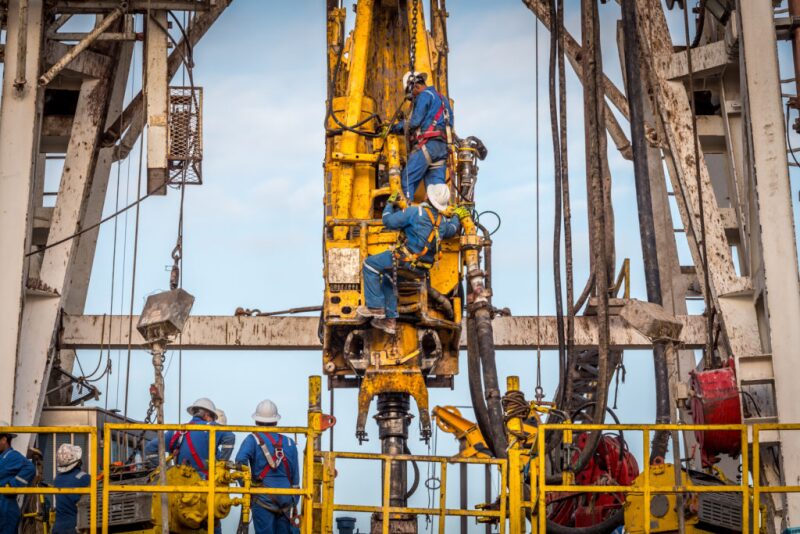The tools that drive the evolution of safety in upstream oil and gas operations are shifting from “hard” to “soft,” according to presenters at the 2019 IADC Health, Safety, Environment & Training Conference, held 5–6 February in Houston.
“Safety has become the 24/365 top responsibility of everyone in the industry,” said Kevin Neveu, 2019 IADC chairman and Precision Drilling president and chief executive officer, in his keynote address to the conference’s 239 attendees.
“Many people like to say safety is a journey,” he said. “I prefer to call it an intelligently directed evolution.”
According to various presenters at the conference, that evolution has taken the industry’s definition of safety from the absence of incidents to the presence of effective safeguards. Similarly, safety-management focus has evolved from engineering and controls to culture and human-factors-based behavior; from culpability to accountability; from blame and punishment to learning and improvement; and from outcomes to a better understanding of motivating factors and their effect on decisions.
“In the 1970s, consistency and repeatability in safety were more about luck than planning,” Neveu said. “But safety is not about luck. Today, we are bringing people and technology together for vigilance, understanding, and planning to control and prevent the situations that lead to bad outcomes.”
Human Performance and Human Factors
Sandra Adkins, safety adviser for BP, addressed the conference on human performance and human factors.
“This is not the flavor of the month,” she said, explaining that human factors can be integrated into the work that companies are already doing.
“First,” she said, “we need to do some jargon busting.”
“Human performance,” she explained, refers to outcomes, or what happens. “Human factors,” on the other hand, refers to what influences human performance—the drivers of the outcomes. The two are closely intertwined.
Among the principles of human performance are
- People will make mistakes.
- People’s actions are rarely malicious and usually make sense to the person at the time they are performed.
- Mistakes are a result of underlying causes and systems related to people, plant, and process.
- Understanding why mistakes are made will help prevent or correct them in the future, reducing the occurrence and threat of incidents.
Adkins said that human factors uses engineering, psychology, and design to enable people in the field to have more good days, leading to fewer incidents.
She introduced the BP Human Factors Investigation Toolkit and said it is helping people in her organization and beyond to think differently and develop more creative solutions. She also discussed how BP, Chevron, and Shell are working together to share best practices for the purpose of making human factors sustainable and integrating it into their organizations.
Changes and Challenges
Presenters from onshore and offshore drilling contractors, operating companies, and consulting firms addressed changes in the industry and the effects—often challenging—these have on safety. Key among these is the pace of work, which many described as overwhelming.
According to a panel of onshore drilling contractors, the pressure to perform accurately and quickly and the effect of technological advancements on drilling rigs and systems are key factors in personnel retention.
Offshore contractors have not seen the same retention issues but said they encountered learning-curve challenges when moving into areas with stringent local workforce requirements.
Inexperience and knowledge gaps are prevalent across all operations, and many presenters agreed that processes are needed to combat these. However, they also said that the processes need to be more risk-based and less prescriptive and need to align with priorities.
Presenters and audience members agreed that young recruits, who have used hand-held devices almost since birth, are guiding their teams’ digital-technology adoption and application.
Culture Is the Constant
Throughout the 2-day conference, the importance of culture was a constant theme. Speaking on the effect of culture on performance, Dave Massey, president of the REACH Group, pointed out that culture is the one thing that no company can copy from another.
“It is who you are and the way you do things,” he said.
Leaders must manage culture through their words and actions and must ensure that what goes on in any location and any operation, whether they are present or not, is consistent with the culture they want to achieve.
“If you don’t manage culture, it will manage you,” Massey said.
Having the right policies and procedures in place will not necessarily guide behaviors.
“Only when you have common language, values, and standards can you have cohesive culture,” Massey said, quoting Harvard Business Review.
“Culture eats strategy for breakfast.”


